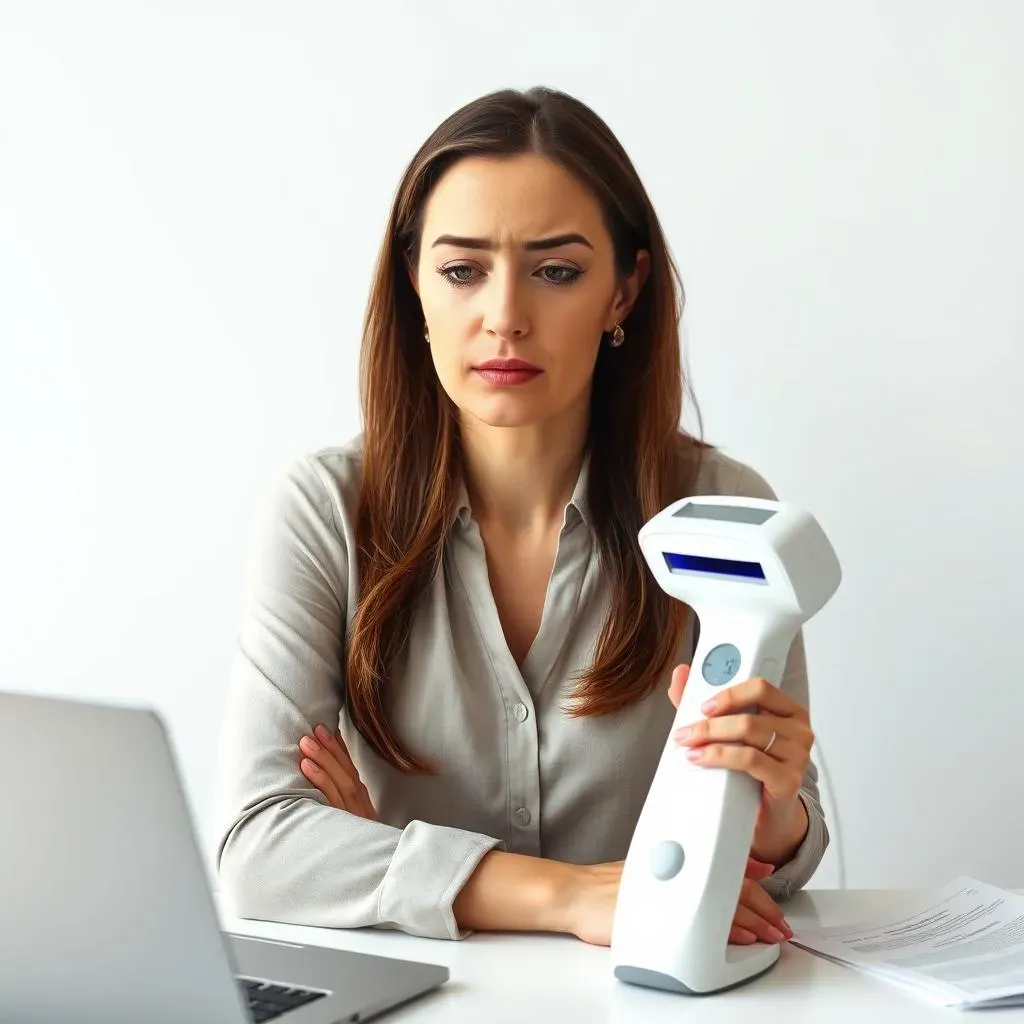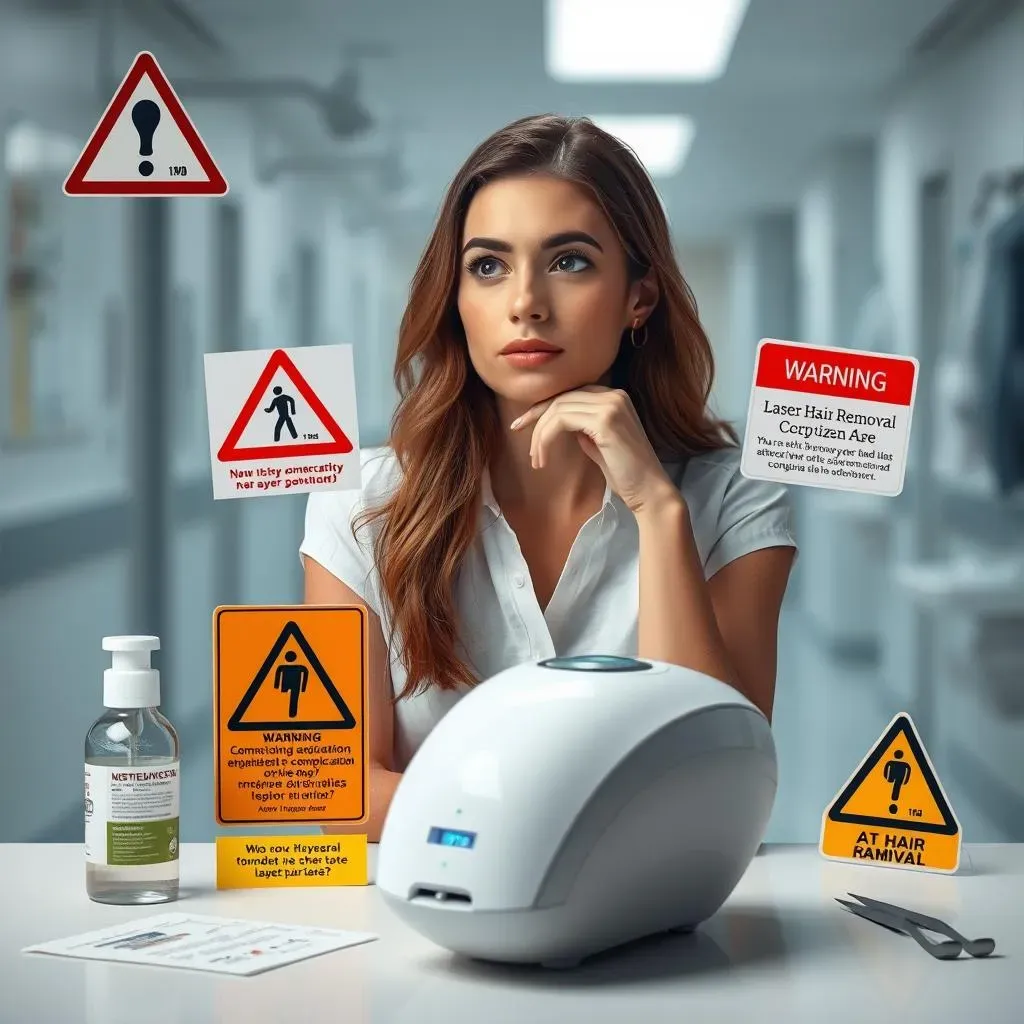Table of Contents
Laser hair removal has become a popular method for achieving smooth, hair-free skin, with many opting for at-home devices as a convenient and cost-effective alternative to professional treatments. However, like any medical procedure, at-home laser hair removal comes with potential risks and side effects. In this article, we will delve into the world of at-home laser hair removal, exploring the common side effects, risks, and complications associated with these devices. We will discuss the importance of proper usage, skin type, and hair color in minimizing the side effects of at home laser hair removal. Whether you're considering trying at-home laser hair removal or have already started treatments, it's essential to understand the possible side effects and take necessary precautions to ensure a safe and effective experience. By the end of this article, you'll be well-equipped with the knowledge to navigate the potential side effects of at home laser hair removal and make informed decisions about your hair removal journey.
What are the Common Side Effects of At Home Laser Hair Removal?

What are the Common Side Effects of At Home Laser Hair Removal?
Understanding the Risks
At-home laser hair removal devices have gained popularity due to their convenience and affordability. However, as with any medical treatment, there are potential side effects to be aware of. The most common side effects of at-home laser hair removal include skin irritation, such as redness, itching, and swelling. These symptoms are usually temporary and resolve on their own within a few hours. More severe side effects can occur, such as burns, blisters, and changes in skin pigmentation.
It's essential to understand that these side effects can be exacerbated by improper use of the device, such as using it on the wrong skin type or hair color. For example, people with darker skin tones or lighter hair colors may experience more severe side effects due to the laser's difficulty in distinguishing between hair and skin.
Side Effect | Description | Duration |
|---|---|---|
Skin Irritation | Redness, itching, swelling | Temporary (few hours) |
Burns/Blistering | Painful, potentially leaving scars | Variable (depending on severity) |
Pigmentation Changes | Darkening or lightening of skin | Variable (may be permanent) |
Factors Influencing Side Effects
The likelihood and severity of side effects from at-home laser hair removal depend on several factors, including skin type, hair color, and the device's settings. It's crucial to choose a device that is suitable for your skin tone and hair color to minimize the risk of adverse effects.
- Skin Type: Fair skin with dark hair is the ideal combination for laser hair removal. Individuals with darker skin tones or lighter hair colors are at a higher risk of side effects.
- Hair Color: The laser targets the pigment in the hair follicle, so darker hair colors are more easily treated. Lighter hair colors, such as blonde or red, may not respond as well and increase the risk of side effects.
- Device Settings: Using the correct intensity and pulse width is vital. Higher settings can increase the risk of burns and blisters, while lower settings may not be effective for hair removal.
Being aware of these factors and taking steps to mitigate risks can help minimize the side effects of at-home laser hair removal. However, it's essential to remember that even with precautions, side effects can still occur.
Conclusion
In conclusion, while at-home laser hair removal can be an effective method for reducing unwanted hair, it's crucial to be aware of the potential side effects. By understanding the risks and taking necessary precautions, individuals can minimize the likelihood of adverse effects and ensure a safer experience.
Risks and Complications Associated with At Home Laser Hair Removal

Risks and Complications Associated with At Home Laser Hair Removal
While at-home laser hair removal devices can be effective, they also come with a range of risks and complications that users should be aware of. One of the most significant risks is the potential for burns and blisters, which can occur if the device is not used correctly or if the skin is not properly prepared. Additionally, there is a risk of infections, especially if the device is not cleaned and maintained properly.
Risk | Description | Prevention |
|---|---|---|
Burns/Blistering | Painful, potentially leaving scars | Use correct settings, avoid overlaps, and follow instructions |
Infections | Bacterial or fungal infections from improper hygiene | Clean and disinfect the device regularly, wash hands before use |
Eye Damage | Potential blindness from direct exposure to the laser | Wear protective eyewear, avoid pointing the laser near eyes |
Another complication associated with at-home laser hair removal is the potential for skin discoloration. This can occur when the laser damages the skin's pigment, leading to darker or lighter patches. This risk is higher for individuals with darker skin tones or those who tan easily. Furthermore, there is a risk of paradoxical hypertrichosis, a condition where the laser stimulates hair growth instead of reducing it.
- Paradoxical Hypertrichosis: Increased hair growth in the treated area
- Skin Discoloration: Permanent changes in skin pigment
- Scarring: Permanent scars from burns or blisters
It's essential for users to carefully evaluate their skin type and hair color before using an at-home laser hair removal device. Choosing a device that is suitable for their skin and hair can help minimize the risk of complications. Additionally, following the manufacturer's instructions and taking necessary precautions can reduce the likelihood of adverse effects.
How to Minimize Side Effects of At Home Laser Hair Removal

How to Minimize Side Effects of At Home Laser Hair Removal
Preparing Your Skin
Before using an at-home laser hair removal device, it's essential to prepare your skin properly to minimize the risk of side effects. Start by ensuring your skin is clean and dry. Remove any makeup, creams, or lotions, as these can interfere with the laser's effectiveness and increase the risk of irritation. Exfoliate your skin 1-2 weeks prior to treatment to remove dead skin cells and help the laser penetrate more evenly.
It's also crucial to avoid sun exposure for at least 2 weeks before treatment. Tanning or sunburned skin can increase the risk of side effects, as the laser may have difficulty distinguishing between skin and hair. If you must go outside, use a broad-spectrum sunscreen with at least SPF 30.
Pre-Treatment Preparation | Why It's Important | Duration |
|---|---|---|
Clean and dry skin | Removes barriers, reduces irritation risk | Ongoing |
Exfoliate 1-2 weeks prior | Removes dead skin, improves laser penetration | 1-2 weeks |
Avoid sun exposure | Reduces risk of pigment changes and irritation | At least 2 weeks |
Using the Device Correctly
Using the at-home laser hair removal device correctly is vital to minimizing side effects. Always follow the manufacturer's instructions for use, and start with lower intensity settings to test your skin's sensitivity. Gradually increase the intensity as needed, but avoid using the highest settings unless necessary. It's also essential to maintain the device according to the manufacturer's guidelines to prevent bacterial buildup and ensure effective treatment.
When using the device, move it slowly and steadily over the treatment area, avoiding overlaps and keeping the device in constant motion. Overlapping can cause burns or blisters, while stationary use can lead to skin damage.
- Start with lower intensity and adjust as needed
- Move the device slowly and steadily to avoid overlaps
- Maintain the device regularly to prevent bacterial buildup
Alternatives to At Home Laser Hair Removal and Professional Options

Alternatives to At Home Laser Hair Removal and Professional Options
Professional Laser Hair Removal: A Safer Alternative
For those who are concerned about the potential side effects of at-home laser hair removal, professional laser hair removal is a safer and more effective alternative. Performed by trained professionals, these treatments use higher-quality lasers that are tailored to individual skin types and hair colors, reducing the risk of complications. Professional laser hair removal is typically performed in a clinic or spa, ensuring a clean and sterile environment that minimizes the risk of infection.
One of the primary advantages of professional laser hair removal is the precision and customization it offers. Experienced technicians can adjust the laser settings to suit your specific needs, whether you have fair skin and dark hair or a darker skin tone with lighter hair. This tailored approach reduces the risk of side effects and improves the overall efficacy of the treatment.
Benefit | Description | Advantage |
|---|---|---|
Customized Treatment | Settings adjusted for skin and hair type | Reduced side effects, improved results |
High-Quality Equipment | Advanced lasers with better safety features | More effective, lower risk of complications |
Sterile Environment | Clinic or spa setting minimizes infection risk | Safer, more hygienic |
Other Alternatives to Laser Hair Removal
While laser hair removal is a popular choice for many, it's not the only option for achieving smooth skin. For those who are sensitive to laser treatments or prefer alternative methods, there are several options available. Waxing and sugaring are traditional methods that remove hair from the root, providing longer-lasting results than shaving. Depilatory creams dissolve hair at the surface, making them easy to wipe away, but may not be as long-lasting.
Electrolysis is another permanent hair removal method that uses a fine needle to destroy the hair follicle with a small electrical charge. While it can be time-consuming, electrolysis is a good option for those with lighter hair colors or smaller areas. Threading is a technique that removes hair from the root using a thread, which is commonly used for shaping eyebrows but can be used on other areas as well.
- Waxing/Sugaring: Long-lasting, but may cause irritation
- Depilatory Creams: Easy to use, but less effective
- Electrolysis: Permanent, but time-consuming
- Threading: Quick, but may cause redness
Conclusion: Navigating the Side Effects of At Home Laser Hair Removal
In conclusion, while at-home laser hair removal can be an effective and convenient way to remove unwanted hair, it's crucial to be aware of the potential side effects and take steps to minimize them. By understanding the risks associated with skin irritation, pigment changes, and other complications, you can make informed decisions about your hair removal method. Remember to choose a device compatible with your skin tone and hair color, follow the manufacturer's instructions, and take necessary precautions before and after treatment. If you're unsure or experience severe side effects, consider consulting a professional for guidance. With the right knowledge and precautions, you can enjoy the benefits of laser hair removal while minimizing the side effects of at home laser hair removal.
